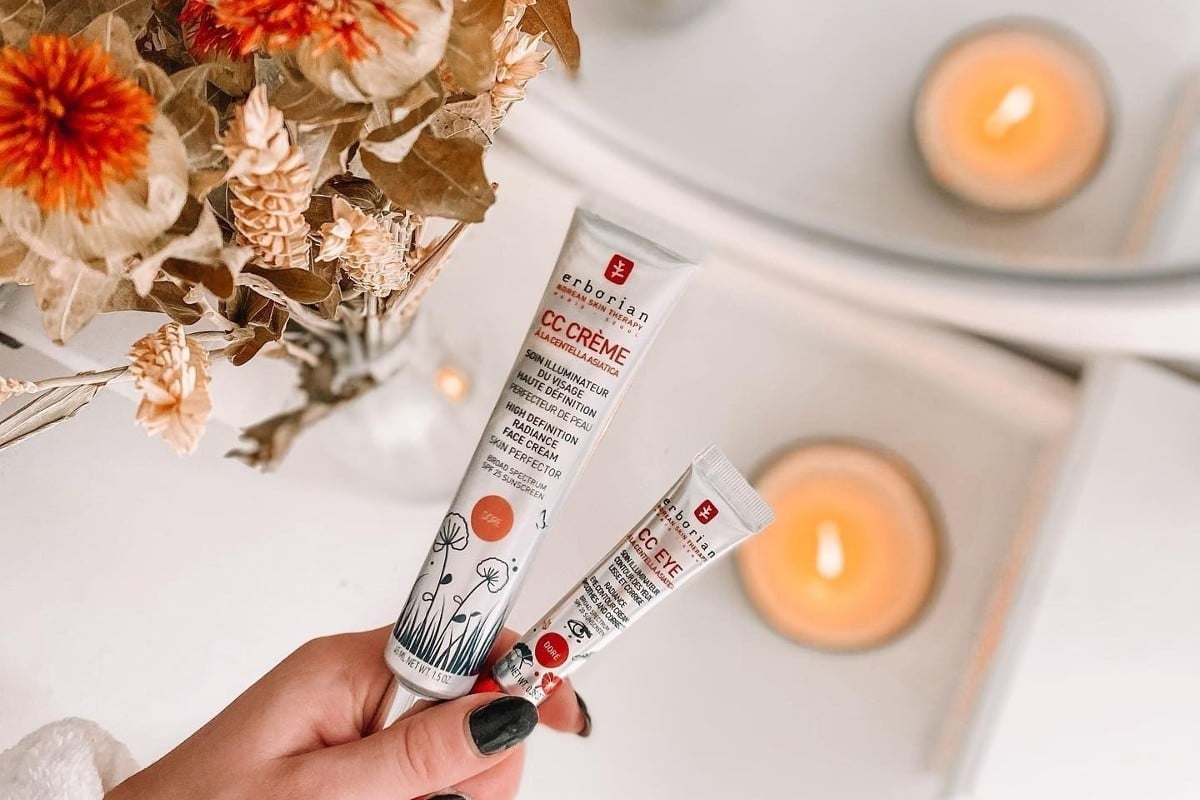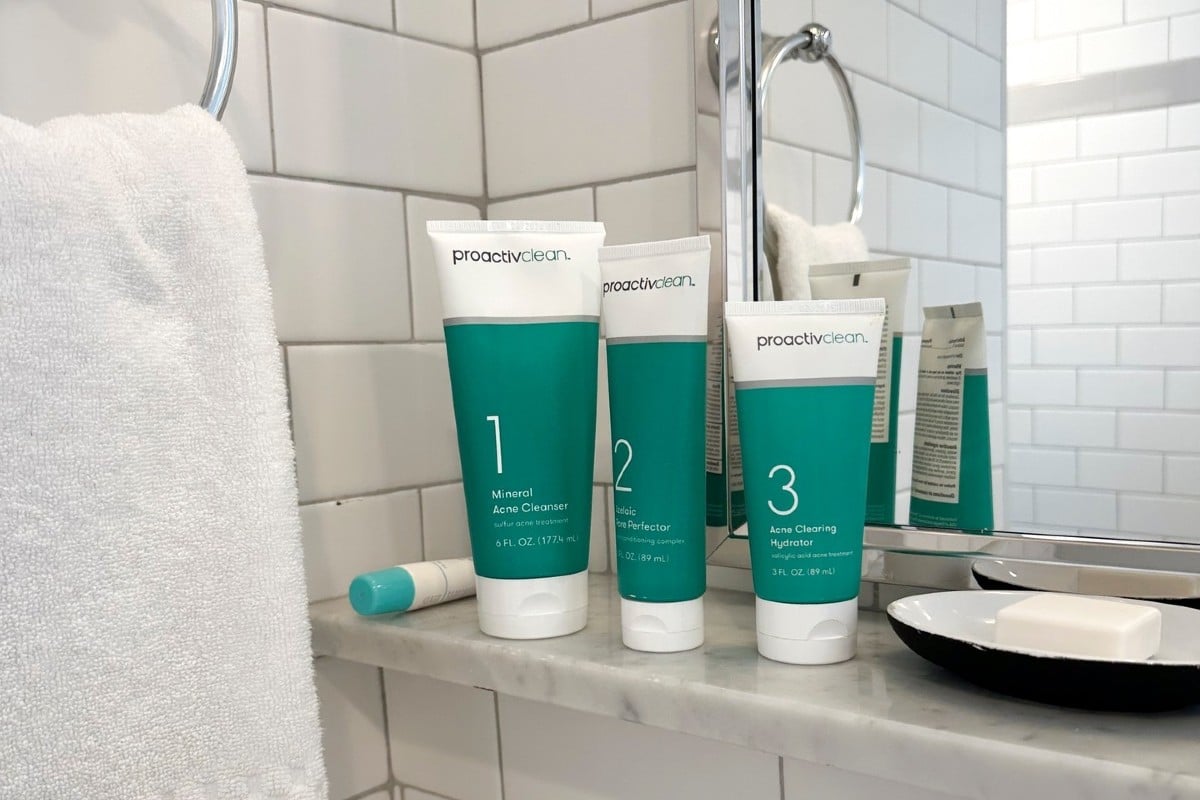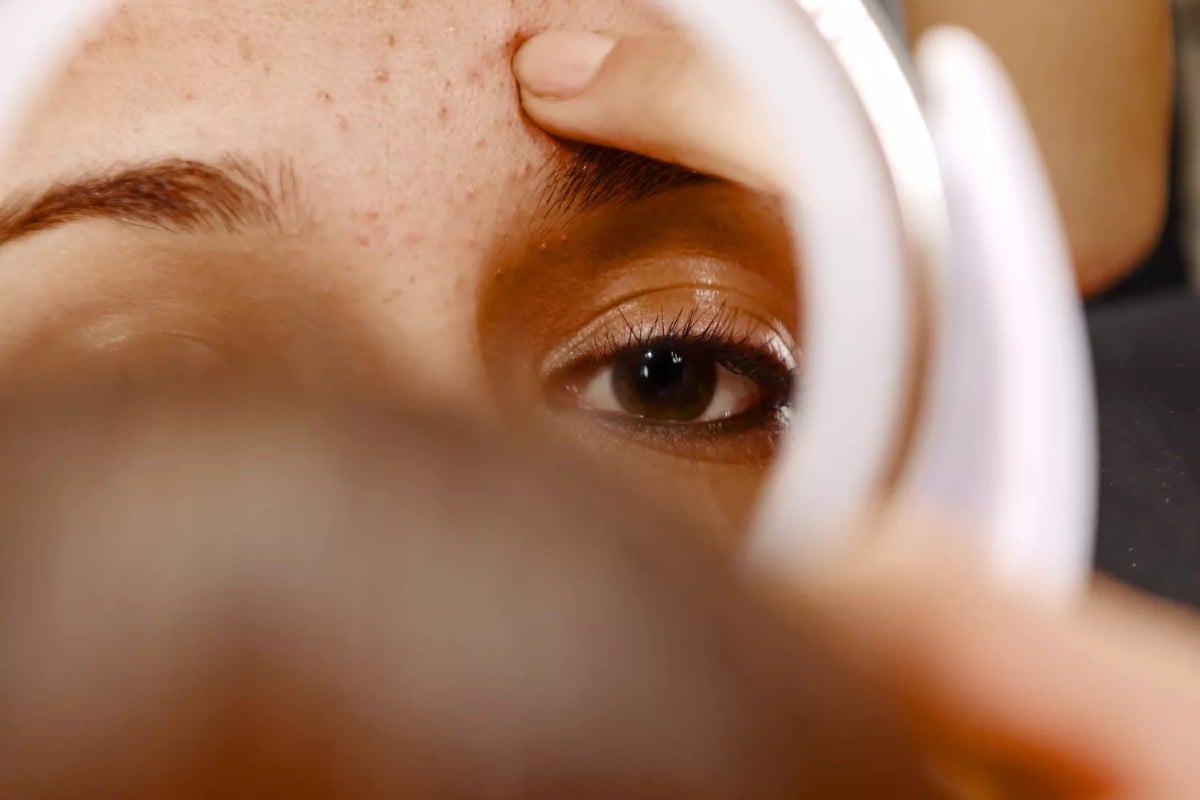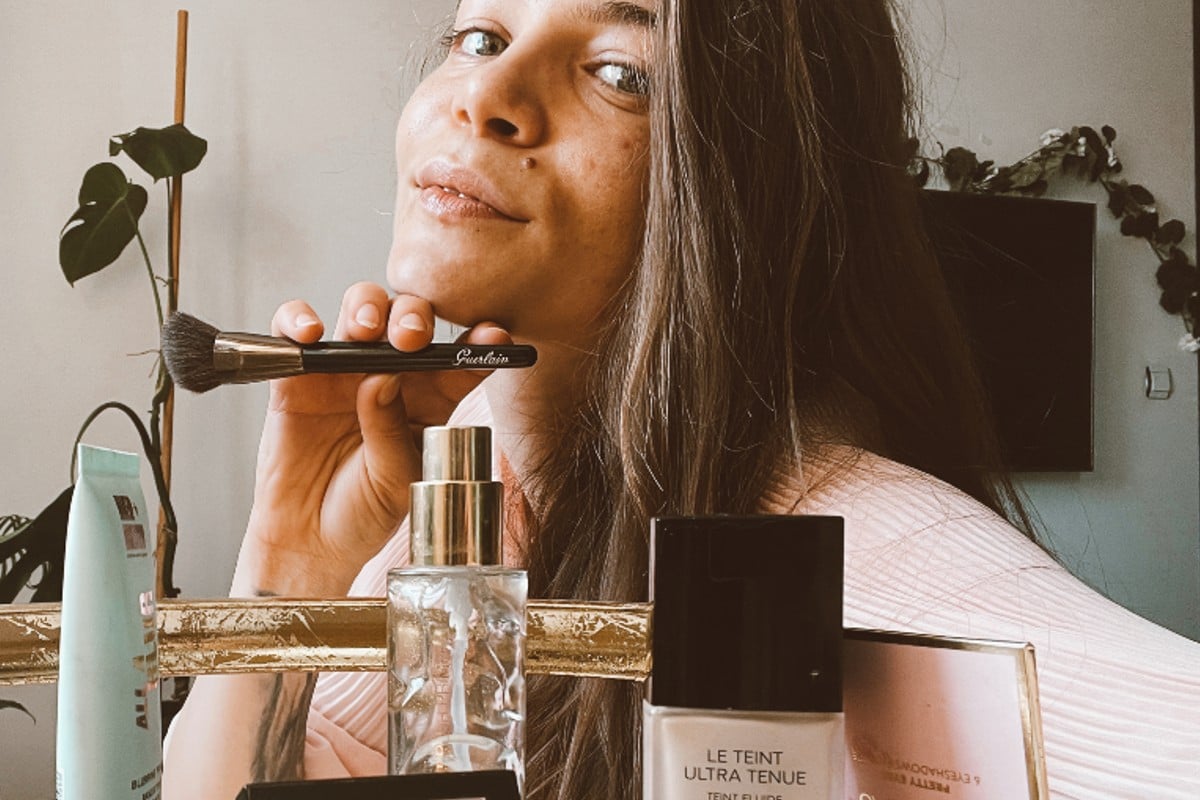While home remedies won’t cure your acne—nothing can, in fact—they are effective in clearing your skin and reducing bacteria and inflammation—the main acne triggers. And they’re easy to make at home, with no fancy tools and hard-to-find ingredients.
Can home remedies treat acne?
Since acne is a medical condition and not a cosmetic issue, it’s difficult to believe you can cure it with home remedies. Natural ingredients like aloe vera or green tea can calm inflammation and fight bacteria, which can relieve occasional breakouts. But they don’t get to the root cause of acne. Think of them as a band-aid solution, not a long-term solution. For real and lasting results, you often need targeted treatment. So, while it’s fine to use these natural remedies for a quick fix, if you’re dealing with serious acne, it’s best to consult a dermatologist for a more effective treatment.
Acne home remedies
Tea tree oil
Tea tree oil is one of the most effective home remedies for acne and has been shown to kill bacteria and reduce skin inflammation. Plus, it has antioxidant effects and accelerates healing.[1][2]
There was even a study where they compared tea tree oil and benzoyl peroxide for treating acne. Turns out, both worked well for reducing inflammatory and non-inflammatory acne. But the cool part? Those using tea tree oil had fewer side effects. So, if benzoyl peroxide is too harsh for your skin, tea tree oil might be a gentler option to try out.[3]
How to use: Dilute tea tree oil with a carrier oil to avoid skin irritation, as tea tree oil can be a bit too strong on its own. Apply a small amount to your skin and focus on areas that are prone to acne. You can also add tea tree oil to your homemade acne mask or mix it into your toner or moisturizer.
Green tea
Recent studies show that acne sufferers often have lower levels of antioxidants in their bodies. So, using antioxidants might just be your ticket to clearer skin.[4] And what’s a better antioxidant than green tea? As a matter of fact, one of the major polyphenols in green tea, epigallocatechin gallate (EGCG), has been found to kill acne-causing bacteria, reduce sebum, and soothe swelling.[5][6] FYI, matcha is the best green tea because it contains about three times more antioxidants and more than double the amount of vitamin C than other green teas.[7]
How to use: Take the contents of two green tea bags, moisten them with warm water, then add a small amount of honey (or aloe vera gel). Spread the blend as a spot treatment on acne and let it act for 20 minutes. Or, for a quick solution, do a facial spritz with green tea. Prepare a green tea and let it cool completely, then put it in a spritz bottle. Every day, spray it on cleansed skin and let it dry for 20 minutes before you rinse your face. You can also use cotton pads to dab the green tea mixture onto your face if that’s more convenient. Drinking green tea can also relieve acne.[8]
Honey and cinnamon
Cinnamon and honey offer a dual solution to acne since both fight bacteria and reduce swelling. Honey has high antimicrobial properties and acts like a humectant, meaning it hydrates the skin and regulates sebum production.[9] On the other hand, cinnamon has anti-inflammatory, antimicrobial, and antioxidant activities. Thus, they work in tandem to combat bacteria and reduce inflammation.[10] P.S.: Use manuka honey to get the best results.
How to use: Mix three tbs of honey and one of cinnamon until you get a paste-like consistency. Layer a mask with the mixture over cleansed face, avoiding the eye area, and leave it on for 15 minutes, then rinse.
Mint
Mint has anti-inflammatory properties and acts as an antioxidant due to the presence of flavonoids, phenols, and carotenoids.[11] But that’s not all—mint leaves also bring antibacterial and antifungal properties to the table.
How to use: Mix two tbs of chopped fresh mint, two tbs of plain yogurt, and ground oatmeal. Leave the mixture on your face for 10 minutes.
Echinacea
Echinacea is both an antimicrobial and anti-inflammatory ingredient, making it a fantastic natural treatment for acne. It has been shown to kill P.acnes bacteria, which is the main cause of acne.[12]
How to use: Use echinacea tea as a daily facial wash or dunk a cotton ball and use it on your blemishes. See how your skin clears every time.
Aloe vera
Aloe vera gel contains salicylic acid and sulfur, which kill fungi and bacteria that can cause acne.[13] Also, aloe vera is moisturizing, which can reduce sebum production, and has anti-inflammatory properties.[14]
How to use: Take the gel from aloe vera with a spoon, apply it over the face, and leave for 15 minutes. You can mix aloe vera gel with honey and tea tree oil. Or, you can spot-treat your acne breakouts by leaving the aloe vera gel overnight and washing it off in the morning with a cleanser.
Apple cider vinegar
Yes, apple cider vinegar can treat your acne. It’s a rich source of alpha-hydroxy acids (acetic, malic, and lactic acids). These acids give it some special powers: acetic acid kills bacteria and gently exfoliates your skin, while malic acid is a strong antibacterial that targets acne-causing bacteria.
How to use: Dilute apple cider vinegar with water before applying it to the skin to avoid irritation. Apply it with a cotton ball over the blemishes, and rinse after ten minutes. Or, you can use it as a toner by using the cotton pad to remove dead skin and give your skin a gentle exfoliation.
Read next: 8 Household Items That Can Make Acne Worse
Sources
Women’s Concepts uses reliable sources, including dermatologists’ insights, clinical trials, and scientific journals, to find accurate information and support all the facts shared in our articles.
- Pazyar N, Yaghoobi R, Bagherani N, Kazerouni A. A review of applications of tea tree oil in dermatology. Int J Dermatol. 2013 Jul;52(7):784-90. doi: 10.1111/j.1365-4632.2012.05654.x. Epub 2012 Sep 24.
- Malhi HK, Tu J, Riley TV, Kumarasinghe SP, Hammer KA. Tea tree oil gel for mild to moderate acne; a 12 week uncontrolled, open-label phase II pilot study. Australas J Dermatol. 2017 Aug;58(3):205-210. doi: 10.1111/ajd.12465. Epub 2016 Mar 21. PMID: 27000386.
- Bassett IB, Pannowitz DL, Barnetson RS. A comparative study of tea-tree oil versus benzoylperoxide in the treatment of acne. Med J Aust. 1990 Oct 15;153(8):455-8. doi: 10.5694/j.1326-5377.1990.tb126150.x.
- Mills OH, Criscito MC, Schlesinger TE, Verdicchio R, Szoke E. Addressing Free Radical Oxidation in Acne Vulgaris. J Clin Aesthet Dermatol. 2016 Jan;9(1):25-30. PMID: 26962389; PMCID: PMC4756869.
- Yoon JY, Kwon HH, Min SU, Thiboutot DM, Suh DH. Epigallocatechin-3-gallate improves acne in humans by modulating intracellular molecular targets and inhibiting P. acnes. J Invest Dermatol. 2013 Feb;133(2):429-40. doi: 10.1038/jid.2012.292. Epub 2012 Oct 25. PMID: 23096708.
- Saric S, Notay M, Sivamani RK. Green Tea and Other Tea Polyphenols: Effects on Sebum Production and Acne Vulgaris. Antioxidants (Basel). 2016 Dec 29;6(1):2. doi: 10.3390/antiox6010002. PMID: 28036057; PMCID: PMC5384166.
- Kochman J, Jakubczyk K, Antoniewicz J, Mruk H, Janda K. Health Benefits and Chemical Composition of Matcha Green Tea: A Review. Molecules. 2020 Dec 27;26(1):85. doi: 10.3390/molecules26010085. PMID: 33375458; PMCID: PMC7796401.
- Di Sotto A, Gullì M, Percaccio E, Vitalone A, Mazzanti G, Di Giacomo S. Efficacy and Safety of Oral Green Tea Preparations in Skin Ailments: A Systematic Review of Clinical Studies. Nutrients. 2022 Jul 30;14(15):3149. doi: 10.3390/nu14153149. PMID: 35956325; PMCID: PMC9370301.
- Burlando B, Cornara L. Honey in dermatology and skin care: a review. J Cosmet Dermatol. 2013 Dec;12(4):306-13. doi: 10.1111/jocd.12058. PMID: 24305429.
- Julianti E, Rajah KK, Fidrianny I. Antibacterial Activity of Ethanolic Extract of Cinnamon Bark, Honey, and Their Combination Effects against Acne-Causing Bacteria. Sci Pharm. 2017 Apr 11;85(2):19. doi: 10.3390/scipharm85020019. PMID: 28398231; PMCID: PMC5489923.
- Park YJ, Baek SA, Choi Y, Kim JK, Park SU. Metabolic Profiling of Nine Mentha Species and Prediction of Their Antioxidant Properties Using Chemometrics. Molecules. 2019 Jan 11;24(2):258. doi: 10.3390/molecules24020258. PMID: 30641968; PMCID: PMC6359624.
- Nasri H, Bahmani M, Shahinfard N, Moradi Nafchi A, Saberianpour S, Rafieian Kopaei M. Medicinal Plants for the Treatment of Acne Vulgaris: A Review of Recent Evidences. Jundishapur J Microbiol. 2015 Nov 21;8(11):e25580. doi: 10.5812/jjm.25580. PMID: 26862380; PMCID: PMC4740760.
- Surjushe A, Vasani R, Saple DG. Aloe vera: a short review. Indian J Dermatol. 2008;53(4):163-6. doi: 10.4103/0019-5154.44785. PMID: 19882025; PMCID: PMC2763764.
- Rahmani AH, Aldebasi YH, Srikar S, Khan AA, Aly SM. Aloe vera: Potential candidate in health management via modulation of biological activities. Pharmacogn Rev. 2015 Jul-Dec;9(18):120-6. doi: 10.4103/0973-7847.162118. PMID: 26392709; PMCID: PMC4557234.
- Gold MH, Andriessen A, Biron J, Andriessen H. Clinical Efficacy of Self-applied Blue Light Therapy for Mild-to-Moderate Facial Acne. J Clin Aesthet Dermatol. 2009 Mar;2(3):44-50. PMID: 20729943.





